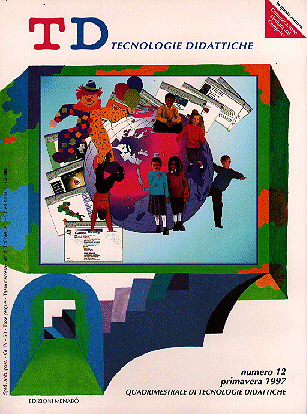Come lo hanno usato? Il coinvolgimento degli studenti di informatica in un ambiente CMC creato per l'apprendimento a distanza
Contenuto principale dell'articolo
Abstract
Dettagli dell'articolo
Gli autori che pubblicano su questa rivista accettano le seguenti condizioni:
- Gli autori mantengono i diritti sulla loro opera e cedono alla rivista il diritto di prima pubblicazione dell'opera, contemporaneamente licenziata sotto una Licenza Creative Commons CC BY 4.0 Attribution 4.0 International License.
- Gli autori possono aderire ad altri accordi di licenza non esclusiva per la distribuzione della versione dell'opera pubblicata (es. depositarla in un archivio istituzionale o pubblicarla in una monografia), a patto di indicare che la prima pubblicazione è avvenuta su questa rivista.
- Gli autori possono diffondere la loro opera online (es. in repository istituzionali o nel loro sito web) prima e durante il processo di submission, poiché può portare a scambi produttivi e aumentare le citazioni dell'opera pubblicata (Vedi The effect of Open Access).
Riferimenti bibliografici
Berge Z., L. (1995), “Facilitating Computer Conferencing: Recommendations From the Field”, Educational Technology, Vol. 35, Number 1.
Goodyear P., Steeples C., (1994), “Computer-mediated communication in the professional development of workers in the advanced learning technologies industry”, Eccleston J., Barta B., Hambusch R (eds). The computer-mediated education of information technology professionals and advanced endusers, Elsevier: Amsterdam.
Issroff K., del Soldato,T. (1996) Incorporating motivation into computer supported collaborative learning. Euro AIED Lisbon, October, 1996.
Mason R., Kaye A., (1989) Mindweave, Pergamon Press, Oxford.
Mayes T., Coventry L., Thomson A., Mason R., (1994) “Learning through Telematics”. A Learning Framework for Telecommunication Applications in Higher Education, The Institute for Computer Based Learning & The Open University, for British Telecom. Report ref E31/E33.
Ruggles C., Underwood J., Walker D., (1995). “STILE: A Hypermedia approach to the provision of a Flexible, Interdisciplinary Resource base for teaching and learning”. Innovations in Education and Training International, 1995, vol. 32(3), 209-219.
Ruggles C., (1995). “STILE: the growth of a flexible, interdisciplinary resource base for open learning”. In World Conference on Computers in Education VI: WCCE95, Liberating the learner, J David Tinsley and Tom J van Weert, (eds), Chapman and Hall, 1995, pp 899-906.
ShedletskyL., (1993), ‘Minding ComputerMediated Communication: CMC as Experiential Learning’, Educational Technology, Vol. 33 (12).
Steeples C., Goodyear P., Mellar H., (1993), ‘Flexible Learning in Higher Education: The use of Computer-Mediated Communications’, Computers and Education, Pergamon Press.
Underwood J., Dahlberg A., FitzPatrick S., Greenwood M. (1996). ëA STILE Project case study: the evaluation of a computer-based visual key for fossil identificationí. Association for learning Technology Journal, ALT-J, Vol. 4 (2).
Velayo R., S. (1994), ‘Supplementary Classroom Instruction via Computer Conferencing’, Educational Technology, Vol. 34 (5).
Whitelock D., Scanlon E. (1996). Motivation, Media and Motion: Reviewing a Computer Supported Collaborative Learning Experience. Euro AIED Lisbon, October, 1996.
Wilson T., Whitelock D., (1996). “Piloting a new approach; Making use of new technology to present a distance learning computer science course”. Association for Learning Technology Journal (ALT-J), Vol. 4 (1).
Zhao Z., Cook J., Higgen N. (1996). “Online learning for design students”. Association for Learning Technology Journal (ALT-J), Vol. 4 (1).

